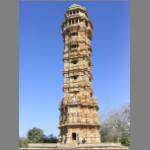
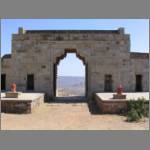
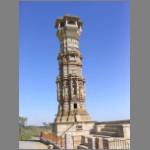
The blog is to follow shortly.
The architectural landmarks of Chittaurgarh include its expansive fort (now in ruins, mostly) and two towers, both built in commemoration of war victories (see below for a photo of the battlefield where those victories were won). The fort complex includes the Rana Kumbha palace, which is supposedly the site of the first jauhar (self-immolalation -- women sacrificing themselves by being burned alive to escape atrocities at the hands of an invading Mughal army) took place in 1303.
The battlefield responsible for the towers above, and the road leading to the main gate of the fort. Can you believe that elephants actually brought equipment and armaments to the fort on the path shown above? If you're willing to believe the guide that we got, then perhaps that's actually true (If you believe guides, then I've got a nice bridge in San Francisco that I'd love to sell you...)
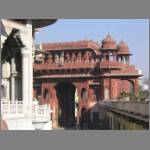
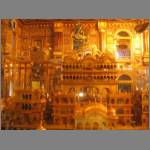
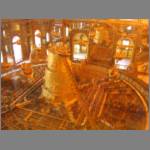
The Nasiyan Temple shown above is a Jain temple located in Ajmer (we only stopped
in Ajmer to look at this site, so that's why its to be found on this webpage).
The temple
houses
a
2-floor golden model that represents the Jain concept of the universe.
The
model is stored behind glass, and the entire area is supposedly vaccum-sealed
and has
consequently not required any cleaning since the time when it was first built.
It was started in 1845 and took 20 artisans 40 years to complete. One interesting
thing about the temple is that it's private (it was built by a single family),
and consequently the whims of the owning family still dictate the caretaking
of the temple (eg: there are supposedly no guidebooks/etc available on the temple
because the owners do not want any others to copy the designs).
The Meera temple in Chittaurgarh is another example of the beautiful architecture of Jain temples.
Indian trucks provide a visual feast, so even if you find yourself stuck behind one on some national highway, you'll probably be entertained for a while by the various slogans (in varying degrees of English competency) that you'll find plastered on their backs. The "Blow Horn" or "Horn Please" signs reflect the common Indian driving practice of honking at the car in front of you until it either moves out of your way, or moves to the right (Indians drive on the left side of the road), thus giving you enough room to pass them. This practice also explains the "Wait for Side" sign, which indicates that if you honk at the driver, he will at some point motion you to pass (either by waving a hand out the window, or using the right turn signal -- Indian drivers never use the signal to actually indicate any sort of turns... that would be silly). The "use dipper at night" sign means that instead of honking at night, you should flash the guy in front of you with your high beams, and then he'll give you the signal to pass. Missing is the ever-present "Ok" sign, but that'll have to wait for some other day... by the way if you ever get in a car in india, don't waste time trying to figure out the rules of the road: There aren't any!
The obligatory vegetable and animal pictures that are required for any Indian page... by the way, I love bananas: they have appeal... I love that one!